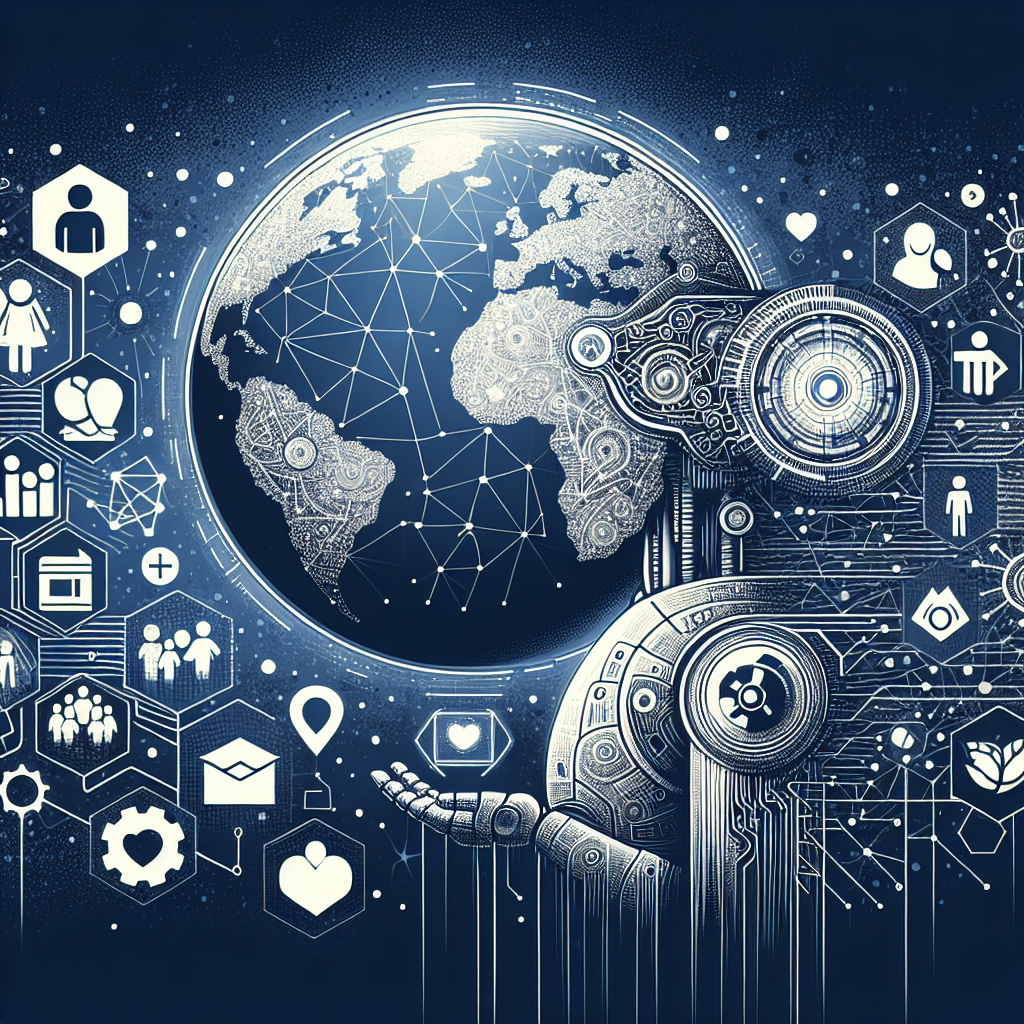In recent years, artificial intelligence (AI) has been increasingly used by nonprofits to enhance their ability to engage with communities and achieve their missions more effectively. AI technologies have the potential to revolutionize the way nonprofits interact with their stakeholders, from donors and volunteers to the communities they serve. By leveraging AI tools, nonprofits can automate processes, personalize communications, and make data-driven decisions that lead to more impactful outcomes.
One of the key ways AI is transforming the way nonprofits engage with communities is through the use of chatbots. Chatbots are AI-powered tools that can interact with users in a conversational manner, answering questions, providing information, and even collecting data. Nonprofits can use chatbots on their websites, social media channels, and messaging platforms to provide instant support to community members, offer resources, and streamline communication. By using chatbots, nonprofits can free up staff time, improve response times, and provide a more personalized experience to their stakeholders.
AI is also being used to analyze data and provide insights that help nonprofits better understand their communities and target their resources more effectively. Nonprofits can use AI algorithms to analyze large datasets, such as demographic information, social media interactions, and donor behavior, to identify trends, patterns, and opportunities. By leveraging AI analytics, nonprofits can make data-driven decisions that lead to more effective programs, targeted outreach, and increased impact.
Furthermore, AI can help nonprofits personalize their communications with community members. By using AI-powered tools, nonprofits can segment their audiences, personalize messages, and deliver content that is tailored to the preferences and interests of each individual. Personalized communications can help nonprofits build stronger relationships with their stakeholders, increase engagement, and drive more meaningful interactions.
Another way AI is transforming the way nonprofits engage with communities is through the use of predictive analytics. By using AI algorithms to analyze historical data and predict future outcomes, nonprofits can anticipate community needs, identify at-risk populations, and tailor their programs and services accordingly. Predictive analytics can help nonprofits allocate resources more efficiently, identify emerging trends, and proactively address challenges before they escalate.
Additionally, AI is being used to enhance fundraising efforts and donor engagement for nonprofits. By using AI tools, nonprofits can analyze donor behavior, segment their donor base, and personalize fundraising appeals to maximize donations. AI-powered fundraising platforms can also help nonprofits identify potential major donors, optimize fundraising campaigns, and track donor engagement over time. By leveraging AI in fundraising efforts, nonprofits can increase their revenue, expand their donor base, and build stronger relationships with supporters.
In conclusion, AI is transforming the way nonprofits engage with communities by enabling them to automate processes, personalize communications, make data-driven decisions, and enhance their fundraising efforts. By leveraging AI technologies, nonprofits can improve their efficiency, effectiveness, and impact, ultimately leading to better outcomes for the communities they serve.
FAQs:
1. What are some examples of AI tools that nonprofits can use to engage with communities?
Some examples of AI tools that nonprofits can use to engage with communities include chatbots, AI analytics platforms, predictive analytics tools, and AI-powered fundraising platforms.
2. How can nonprofits benefit from using AI in their engagement efforts?
Nonprofits can benefit from using AI in their engagement efforts by automating processes, personalizing communications, making data-driven decisions, and enhancing their fundraising efforts. AI technologies can help nonprofits improve their efficiency, effectiveness, and impact, ultimately leading to better outcomes for the communities they serve.
3. Are AI tools expensive for nonprofits to implement?
While some AI tools may require an initial investment, there are also many affordable and user-friendly AI tools available to nonprofits. Nonprofits can explore different options and choose AI tools that align with their budget and goals.
4. How can nonprofits ensure that AI tools are used ethically in their engagement efforts?
Nonprofits should establish clear guidelines and policies for the use of AI tools to ensure that they are used ethically and in line with their values. It is important for nonprofits to prioritize transparency, accountability, and data privacy when implementing AI technologies in their engagement efforts.
5. How can nonprofits measure the impact of AI on their engagement efforts?
Nonprofits can measure the impact of AI on their engagement efforts by tracking key performance indicators, such as response times, engagement rates, donor retention, and program outcomes. By analyzing data and monitoring outcomes, nonprofits can assess the effectiveness of AI tools and make adjustments as needed to achieve their goals.

